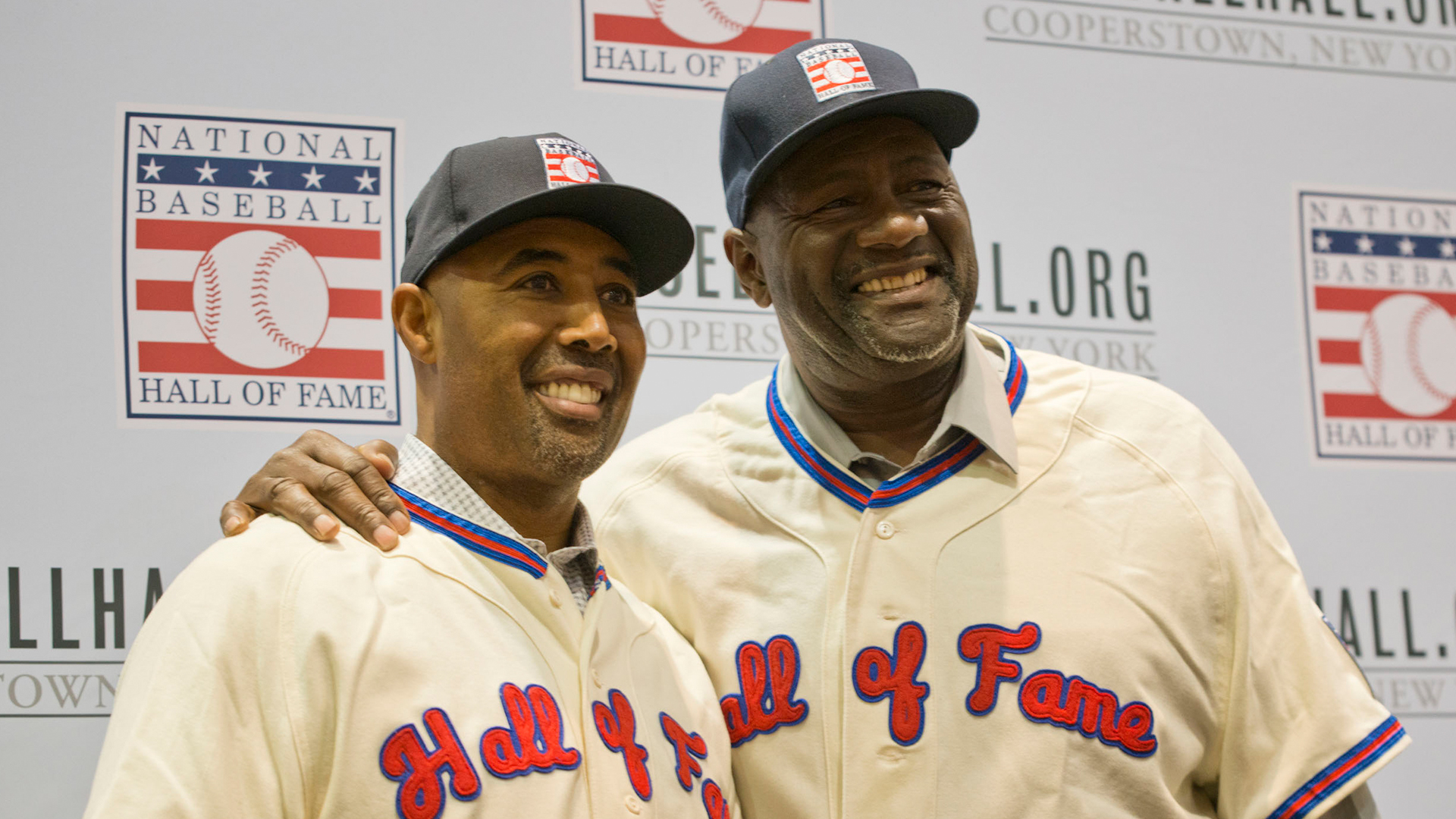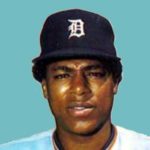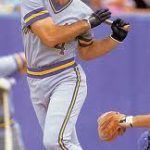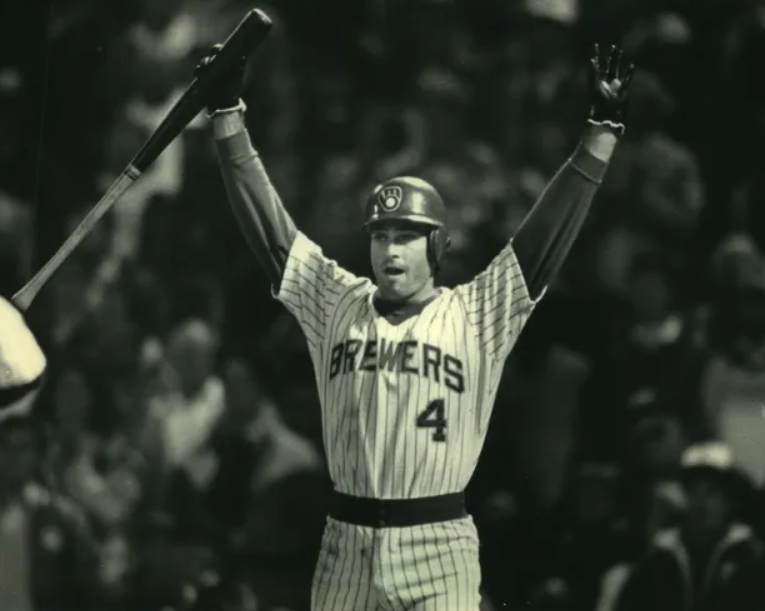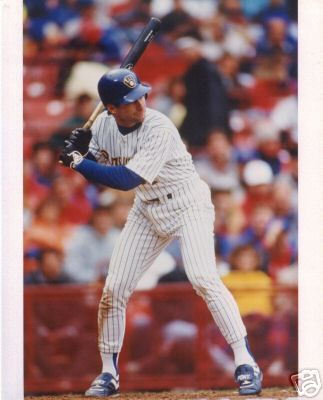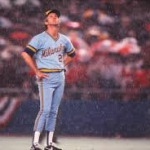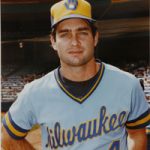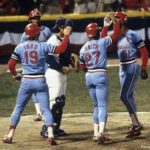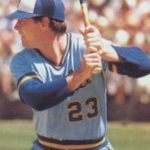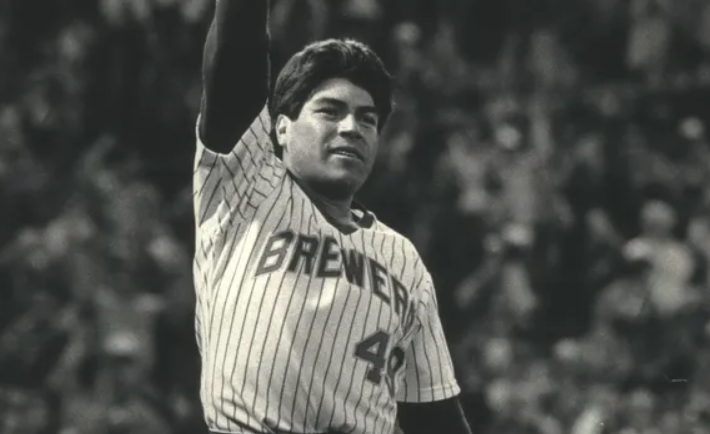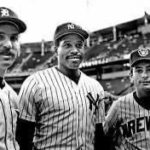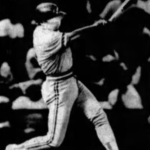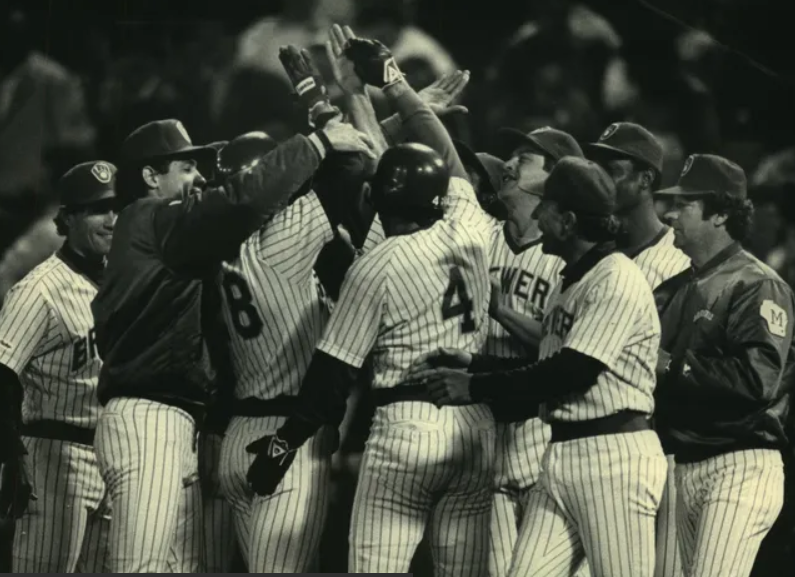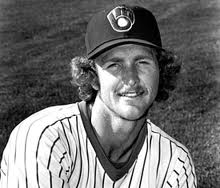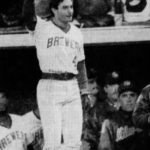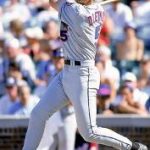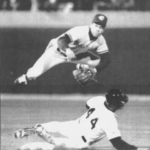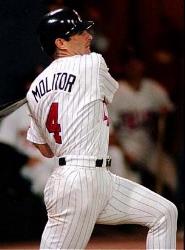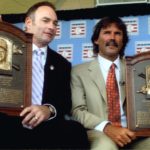Paul Molitor Stats & Facts
Paul Molitor
Positions: Designated Hitter, Third Baseman and Second Baseman
Bats: Right • Throws: Right
6-0, 185lb (183cm, 83kg)
Born: August 22, 1956 in St. Paul, MN
Draft: Drafted by the St. Louis Cardinals in the 28th round of the 1974 MLB June Amateur Draft from Cretin HS (St. Paul, MN) and the Milwaukee Brewers in the 1st round (3rd) of the 1977 MLB June Amateur Draft from University of Minnesota (Minneapolis, MN).
High Schools: Cretin HS (St. Paul, MN), Cretin-Derham Hall HS (St. Paul, MN)
School: University of Minnesota (Minneapolis, MN)
Debut: April 7, 1978 (11,615th in MLB history)
vs. BAL 5 AB, 1 H, 0 HR, 1 RBI, 0 SB
Last Game: September 27, 1998
vs. CLE 4 AB, 2 H, 0 HR, 0 RBI, 0 SB
Hall of Fame: Inducted as Player in 2004. (Voted by BBWAA on 431/506 ballots)
View Paul Molitor’s Page at the Baseball Hall of Fame (plaque, photos, videos).
National Team: us USA (College)
Full Name: Paul Leo Molitor
Nicknames: The Ignitor
View Player Bio from the SABR BioProject
April 7, 1978 At County Stadium, Paul Molitor made his debut for the Milwaukee Brewers playing shortstop, he was the 11,615th player in MLB history, versus the Baltimore Orioles, he went 1-5 with an RBI. His first career hit was against Mike Flanagan a second-inning RBI single, the Brewers will roll over the Orioles 11-3.
Nine Players Who Debuted in 1978
Paul Molitor
Ozzie Smith
Carney Lansford
Pedro Guerrero
Danny Darwin
Mike Morgan
Dave Stewart
Terry Kennedy
Ron Oester
Notable Events and Chronology for Paul Molitor Career
Biography
One of the best pure hitters of his generation, Paul Molitor batted over .300 in nine of 11 seasons at one point, topping the .300-mark a total of 12 times during his Hall of Fame career. Blessed with outstanding running speed and exceptional baserunning skills, Molitor also scored more than 100 runs five times and stole more than 30 bases on eight separate occasions. Molitor was also a versatile athlete, playing every position on the diamond except for pitcher and catcher at some point, and making the All-Star team as a second baseman, third baseman, first baseman, and designated hitter. Molitor’s only real flaw was his inability to remain healthy his first several seasons, prior to assuming the role of a designated hitter during the second half of his career.
Born in St. Paul, Minnesota on August 22, 1956, Paul Leo Molitor spent his early years in organized baseball splitting his time between pitching and playing the infield. After graduating from Cretin-Derham Hall High School in St. Paul, Molitor declined an offer to join the St. Louis Cardinals when he was drafted by the team as a pitcher in the 28th round of the 1974 free-agent draft. Choosing instead to attend college at the University of Minnesota, Molitor spent the next three years starting at shortstop for the Golden Gophers and earning All-American honors in both his sophomore and junior years. The 21-year-old infielder left college after his junior year when the Milwaukee Brewers selected him with the third overall pick of the 1977 free-agent draft.
Molitor advanced quickly through the Milwaukee farm system, spending only three months in the minor leagues before joining the Brewers at the start of the 1978 campaign. Although he also played some games at shortstop, Molitor eventually earned the starting second base job, batting .273, scoring 73 runs, and stealing 30 bases, en route to earning a second-place finish in the A.L. Rookie of the Year balloting. Molitor developed into one of the team’s top offensive weapons the following year, scoring 88 runs and placing among the league leaders with a .322 batting average, 188 hits, 16 triples, and 33 stolen bases.
Injuries forced Molitor to miss almost two months of the 1980 season, even though he ended up batting .304, scoring 81 runs, and stealing 34 bases. Defensive lapses and a continued propensity for missing a significant amount of playing time due to injury prompted a move of Molitor, first to the outfield and finally to third base in 1982. Healthy the entire year, Molitor helped lead the Brewers to their first division title by batting .302, hitting 19 home runs, driving in 71 runs, finishing among the league leaders with 201 hits and 41 stolen bases, and topping the circuit with 136 runs scored. Hitting just ahead of A.L. MVP Robin Yount and sluggers Cecil Cooper, Gorman Thomas, and Ben Oglive in the Milwaukee lineup, Molitor served as the team’s offensive catalyst, thereby earning the nickname The Ignitor. The five men formed the nucleus of Milwaukee’s powerful offense, which soon became known as Harvey’s Wallbangers, after team manager Harvey Kuenn. Molitor’s outstanding hitting and baserunning skills enabled him to set the table for the other four men, giving the Brewers easily the American League’s most productive offense. Milwaukee ended up capturing the pennant, before eventually losing the World Series to the St. Louis Cardinals in seven games. Nevertheless, Molitor batted .355 and scored five runs during the Fall Classic, establishing a Series record in the process by accumulating five hits in Game One.
Although injuries continued to hamper Molitor the next few years, he remained one of the league’s most consistent hitters. He was particularly effective in 1987, when he batted a career-high .353, while posting a .438 on-base percentage, stealing 45 bases, and leading the A.L. with 114 runs scored and 41 doubles, despite appearing in only 118 games. It was during that 1987 campaign that Molitor attracted national attention by compiling one of the longest hitting streaks in baseball history. Molitor’s 39-game streak continues to stand as the fifth-longest of the modern era, and the longest since Pete Rose collected at least one hit in 44 consecutive games in 1978. Molitor’s hitting streak came to an end with him kneeling in the on-deck circle when teammate Rick Manning got a game-winning hit to beat the Cleveland Indians on August 26, 1987.
Reflecting back on the contest that ended his pursuit of history, Molitor later said, “I went 0-for-4, it was a 0-0 game, and I ended the game in the on-deck circle when one of our guys drove in a run to win it. But, hey, I got four cracks at him.”
Looking back at his mindset during the streak, Molitor revealed, “I didn’t think about DiMaggio too much, but when I got up into the 30s, I started thinking it would be nice if I could catch Rose and Keeler (Willie).”
Molitor followed his exceptional 1987 campaign with another two very good years, before moving back to his original position of second base in 1990. However, after missing two months of the season due to injury, Molitor split his time in 1991 and 1992 between first base and designated hitter. Appearing in 158 games in each of those years, Molitor posted batting averages of .325 and .320, respectively, while leading the league in 1991 with 133 runs scored, 216 hits, and 13 triples.
With his quick wrists and compact swing, Molitor had no glaring weaknesses as a hitter. Although not a true home-run threat, he had decent power, surpassing 15 homers on six separate occasions and compiling a total of 234 home runs over the course of his career. More of a line-drive and gap-to-gap hitter, Molitor finished in double-digits in triples twice, and he accumulated as many as 30 doubles on 10 separate occasions. He also struck out more than 80 times only twice.
After spending his first 15 years with the Brewers, Molitor left Milwaukee at the conclusion of the 1992 campaign to join the Toronto Blue Jays when he became a free agent. Serving the Blue Jays almost exclusively as a DH, Molitor had one of the finest seasons of his career in 1993. In helping his new team to a World Championship, he hit 22 home runs, knocked in 111 runs, scored 121 others, batted .332, and amassed 211 hits. For his efforts, Molitor earned a second-place finish in the MVP voting. He then batted .391 against Chicago in the ALCS, before posting a mark of .500 against the Phillies in the World Series. He also hit two homers and knocked in eight runs against Philadelphia, en route to earning World Series MVP honors.
Molitor remained in Toronto two more years, performing exceptionally well again during the strike-shortened 1994 campaign when he placed among the league leaders with a .341 batting average, 86 runs scored, and 155 hits.
Molitor left Toronto at the end of 1995 to return to his hometown of Minnesota. He spent his final three seasons with the Twins, posting his best numbers in 1996, when he batted .341, drove in 113 runs, scored 99 others, and led the league with 225 hits. He retired at the end of 1998 with 234 home runs, 1,307 runs batted in, 1,782 runs scored, 3,319 hits, 504 stolen bases, and a .306 batting average. In addition to batting over .300 on 12 separate occasions and scoring more than 100 runs five times, Molitor accumulated more than 200 hits four times. He led the league in runs scored and hits three times each. Molitor finished in the top ten in the league MVP voting four times and earned seven All-Star Game nominations. Although Molitor missed nearly 500 games due to various injuries throughout his career, his 3,319 hits place him ninth on the all-time list.
After retiring as a player, Molitor remained with the Twins as a bench coach for three seasons before leaving the team at the conclusion of the 2001 campaign. The members of the BBWAA elected him to the Hall of Fame three years later, the first time his name appeared on the ballot.
@ET-DC@eyJkeW5hbWljIjp0cnVlLCJjb250ZW50IjoicG9zdF90YWdzIiwic2V0dGluZ3MiOnsiYmVmb3JlIjoiTGVhcm4gTW9yZSBhYm91dCB0aGUgdGVhbXMsIHBsYXllcnMsIGJhbGwgcGFya3MgYW5kIGV2ZW50cyB0aGF0IGhhcHBlbmVkIG9uIHRoaXMgZGF0ZSBpbiBoaXN0b3J5IC0gLSAtIC0gLSAtIC0gIiwiYWZ0ZXIiOiIiLCJsaW5rX3RvX3Rlcm1fcGFnZSI6Im9uIiwic2VwYXJhdG9yIjoiIHwgIiwiY2F0ZWdvcnlfdHlwZSI6InBvc3RfdGFnIn19@
Factoids, Quotes, Milestones and Odd Facts
Similar: Molitor drew comparisons to Joe DiMaggio, after Ted Williams stated that his stance and swing reminded him of the Yankee legend.
Linked: Robin Yount… Dave Winfield, fellow Minnesotan who played late in his career with the Jays and Twins… Alan Trammell, who appeared with Molitor on his rookie Topps baseball card, one of the more valuable cards of that era… Lou Whitaker, who won the 1978 AL Rookie of the Year Award, while Molitor won The Sporting News rookie honor… John Olerud and Roberto Alomar, who finished first and third in the 1993 AL Batting Race, sandwiched around Molitor. The trio were the first three teammates to finish 1-2-3 in 100
Best Season, 1987
Molitor had other years when he was healthier and accumulated more hits and runs, but in ’87 he was a hitting machine when he was in the lineup. In the middle of July he started his 39-game hitting streak, which helped him bat .353 for the season. He also had career-highs in SLG (.566), and OBP (.438). Despite playing just 118 games, he scored 114 times, plated 75 runs, and had 62 extra-base hits, including 41 doubles. He led the AL in runs and doubles. On July 26, Molitor tied a major-league record with three stolen bases in the first inning. The Brewers were 76-41 with him in the lineup, 22-23 without.
Awards and Honors
1993 ML WS MVP
Factoid
On September 12, 1993, Molitor drove in his 100th run of the year in the Blue Jays 4-1 win over California. In so doing, he became the oldest player in major league history to post his first 100-RBI season.
Where He Played: Molitor played more games as DH (1,174) than at any defensive position. He was a DH almost exclusively from 1991-1998. He also played 791 games at third base, 400 games at second base, 197 at first base, 57 at shortstop, and 50 in the outfield (mostly center field).
Minor League Experience
In the June 1977 Draft, Harold Baines (White Sox), and Bill Gullickson (Expos) were selected #1 and #2 in front of #3 Molitor. Also selected in that draft was Danny Ainge, by the Blue Jays in round #15.
Post-Season Notes
On October 12, 1982, Molitor went 5-for-6 to become the first player to collect five hits in a World Series game. Teammate Robin Yount went 4-for-6 as the Brewers beat the Cardinals 10-0 in Game One.
Feats: Molitor hit safely in 39 consecutive games from July 16 to August 25, 1987. The streak was the longest in baseball since Pete Rose’s 44-gamer in 1978. It was the longest AL streak since Joe DiMaggio’s record 56-game streak in 1941.
Milestones
On September 16, 1996, Molitor became the 21st player in major league history to collect 3,000 hits, tripling in the fifth inning against Jose Rosado of the Royals. No other major league player had tripled for his 3,000th hit. Molitor also became the first man to collect 200 hits in the same season he reached 3,000.
Notes
In three straight games in September of 1979, Molitor produced the game-winning hit for the Brewers. His single beat the Mariners, his homer defeated the Angels in the ninth inning, and his seventh-inning double beat the Angels the next night.
Transactions
June 7, 1977: Drafted by the Milwaukee Brewers in the 1st round (3rd pick) of the 1977 amateur draft; November 9, 1987: Granted Free Agency; January 5, 1988: Signed as a Free Agent with the Milwaukee Brewers; October 30, 1992: Granted Free Agency; December 7, 1992: Signed as a Free Agent with the Toronto Blue Jays; November 3, 1995: Granted Free Agency; December 5, 1995: Signed as a Free Agent with the Minnesota Twins; October 28, 1997: Granted Free Agency; December 6, 1997: Signed as a Free Agent with the Minnesota Twins; October 26, 1998: Granted Free Agency.
End of The Streak
On August 26, 1987, Molitor went 0-for-4 in Milwaukee’s 1-0, 10-inning win over the Indians, ending his hitting streak at 39 consecutive games. His streak was the seventh longest in ML history and the longest in the AL since Joe DiMaggio’s 56-game streak in 1941. Molitor faced Cleveland rookie John Farrell all four times, and was on deck when Rick Manning ended the game with a run-scoring pinch single in the bottom of the 10th.
Replaced
The Brewers of the 1970s had a wealth of middle infielders. Molitor assumed the second base job as a rookie in 1978, replacing Don Money, who was shifted to a utlity role, playing most of his games at first base when Cecil Cooper got hurt.
Replaced By
His last job was as the Twins’ DH in 1998. The next season, Marty Cordova and Todd Walker platooned in that role for Minnesota.
Best Strength as a Player
Hitting for average and extra-base power, and also running. Molitor was quite fast.
Largest Weakness as a Player
He was fragile early in his career. After his rookie season, Molitor spent time on the disabled list 10 times in his next nine years with Milwaukee.



